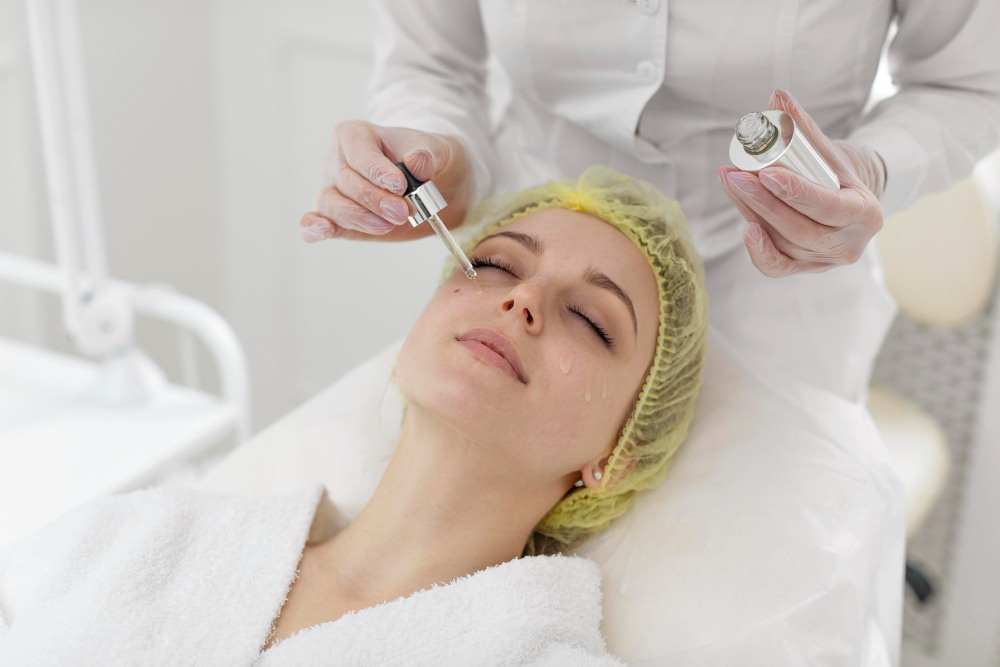Retinol is one of the most powerful ingredients in skincare, known for its ability to reduce fine lines, improve skin texture, and promote a radiant complexion. However, one of the most common side effects people experience when starting retinol is peeling. For many, this can be alarming, uncomfortable, and confusing.
If you have ever wondered why your skin flakes or peels after applying retinol, you are not alone. Peeling is a normal and temporary reaction that signals your skin is adjusting to the active ingredient. In this article, we will explore why retinol causes peeling, what is normal during this process, and how to reduce irritation while still reaping its benefits.
What Is Retinol and How Does It Work
Retinol is a derivative of vitamin A, an ingredient widely used in dermatology for its proven ability to speed up cell turnover and stimulate collagen production. It works by penetrating the skin and promoting the shedding of old, dull cells while encouraging the growth of new, healthy ones.
Over time, this process smooths out wrinkles, refines pores, and evens out skin tone. However, because retinol accelerates exfoliation, it can also temporarily disrupt the skin’s natural barrier, leading to dryness, flaking, and peeling, especially when first introduced into a skincare routine.
Why Retinol Causes Peeling
Peeling is a direct result of retinol’s mechanism of action. When you apply retinol, it increases the rate at which your skin cells renew. This rapid turnover means the outermost layer of dead skin cells sheds faster than usual, revealing newer layers underneath.
While this renewal process is beneficial in the long run, your skin may not be prepared for such a sudden change, especially if it is dry or sensitive. The peeling occurs because the top layer becomes dehydrated and weak, resulting in visible flakes or patches.
The good news is that peeling is usually temporary. As your skin adjusts, it becomes more tolerant, and the dryness gradually subsides.
How Long Retinol Peeling Lasts
The duration of peeling varies from person to person, depending on skin type, retinol strength, and frequency of use. Typically, peeling can last anywhere from one to three weeks after starting retinol.
During this period, the skin undergoes a process often referred to as the “retinization phase.” This adjustment phase is when your skin builds tolerance to retinol’s active ingredients.
If peeling persists beyond a month or becomes painful, it could indicate that the product strength is too high or that you are using it too frequently. In such cases, reducing application frequency or switching to a milder formulation can help.
Signs Your Skin Is Adjusting to Retinol
When introducing retinol into your routine, it is common to experience certain temporary side effects. These can include:
- Mild redness or irritation
- Tightness or dryness
- Flaking or peeling skin
- Increased sensitivity, especially around the mouth or nose
These symptoms are often mild and subside as the skin adapts. However, if you experience severe burning, swelling, or painful peeling, discontinue use and consult a dermatologist.
How to Prevent Peeling When Using Retinol
Prevention is key to minimizing peeling and irritation. The following steps can help your skin adjust smoothly to retinol:
Start Slowly: Introduce retinol gradually. Begin with one or two applications per week, then increase frequency as your skin becomes more tolerant.
Use a Lower Strength: Beginners should start with lower concentrations, such as 0.25 or 0.3 percent, before progressing to stronger formulations.
Moisturize Generously: Apply a nourishing moisturizer before or after retinol to lock in hydration and create a protective barrier.
Avoid Over-Exfoliation: Refrain from using other strong exfoliants like glycolic acid or scrubs when using retinol.
Use Sunscreen Daily: Retinol makes skin more sensitive to UV rays, so applying SPF 30 or higher every morning is essential.
By following these preventive measures, you can enjoy the benefits of retinol without excessive peeling or discomfort.
How to Treat Peeling Skin from Retinol
If your skin is already peeling, there are effective ways to soothe and repair it.
Hydrate Your Skin: Use a gentle, fragrance-free moisturizer multiple times a day. Ingredients like hyaluronic acid, ceramides, and squalane help restore the skin barrier.
Take a Retinol Break: Skip retinol for a few nights to give your skin time to recover. When reintroducing it, use a smaller amount or dilute it with moisturizer.
Avoid Picking or Scrubbing: Let the peeling skin shed naturally. Picking can lead to irritation, scarring, or hyperpigmentation.
Switch to Gentle Cleansers: Use a mild, non-foaming cleanser that will not strip the skin of its natural oils.
Apply Soothing Ingredients: Look for skincare products containing aloe vera, niacinamide, or green tea extract to calm irritation.
With consistent care, peeling should subside within days, leaving your skin smoother and more radiant.
When to See a Dermatologist
While mild peeling is normal, certain signs indicate that your skin may be overexposed to retinol. Seek professional advice if you experience:
- Severe redness or burning sensation
- Painful peeling or cracking skin
- Persistent dryness lasting more than a month
- Signs of infection or inflammation
A dermatologist can assess your skin’s tolerance and may recommend reducing the concentration or frequency of use. They can also suggest complementary products that support barrier repair and hydration.
How to Build a Retinol Routine That Minimizes Peeling
Creating a balanced skincare routine around retinol helps minimize irritation and maintain long-term results. Here’s a simple structure to follow:
Cleanse: Start with a gentle cleanser to remove impurities. Avoid harsh foaming products.
Moisturize First: For sensitive skin, apply a moisturizer before retinol to buffer its effects.
Apply Retinol: Use a pea-sized amount, evenly distributed across the face. Avoid applying near the eyes, nose corners, and mouth initially.
Seal with Hydration: Finish with another layer of moisturizer if needed.
Morning Routine: In the morning, wash your face, moisturize, and apply sunscreen to protect from UV sensitivity.
Consistency is more important than frequency. Using retinol regularly at a tolerable level will yield better long-term results than applying a high-strength product too often.
Alternative Ingredients if Peeling Persists
If your skin cannot tolerate retinol, you can consider gentler alternatives that deliver similar benefits with less irritation.
Bakuchiol: A plant-based compound often referred to as a natural alternative to retinol. It boosts collagen and reduces wrinkles without causing peeling.
Peptides: These help firm the skin and improve elasticity while being gentle enough for sensitive types.
Niacinamide: Known for its calming properties, niacinamide reduces inflammation, improves tone, and strengthens the skin barrier.
These ingredients can be used alone or alongside retinol to reduce dryness and irritation.
The Long-Term Benefits of Retinol
Despite its temporary side effects, retinol offers long-lasting benefits when used correctly. Regular use can lead to:
- Reduced fine lines and wrinkles
- Smoother skin texture
- Fewer breakouts and clogged pores
- Brighter, more even complexion
- Improved collagen production and elasticity
The key to success is patience and consistency. Once your skin adjusts, retinol becomes one of the most transformative ingredients in your skincare routine.
Conclusion
Peeling from retinol can be frustrating, but it is often a sign that the product is doing its job by accelerating cell turnover and renewal. Understanding why it happens helps you take the right steps to manage and prevent discomfort.
With gradual introduction, consistent moisturizing, and proper sun protection, most people can overcome the initial adjustment phase and enjoy smoother, clearer, and more youthful-looking skin. Retinol remains one of the most effective skincare ingredients available, and with the right care, the peeling phase will soon be just a brief part of your journey toward healthier skin.
FAQs
1. Is peeling a sign that retinol is working?
Yes, mild peeling is a normal part of the retinization process. It indicates that your skin is renewing faster. The peeling will reduce as your skin adjusts to regular use.
2. How can I reduce peeling without stopping retinol?
You can buffer retinol by applying it after a moisturizer or mixing a small amount with your moisturizer. This method softens the effects while maintaining results.
3. Can I exfoliate peeling skin from retinol?
It is best to avoid physical or chemical exfoliation during peeling. Allow the skin to shed naturally to prevent irritation and damage.
4. Should I apply moisturizer before or after retinol?
You can do either, depending on your skin’s sensitivity. Applying moisturizer before retinol acts as a barrier and reduces irritation, while applying it after helps lock in hydration.
5. How long before my skin adjusts to retinol?
Most people notice improvement within four to six weeks of consistent use. Once your skin adapts, peeling and irritation typically stop, leaving a smoother and healthier complexion.
Also read: 7 Facts About “Does Phentermine Show on Drug Test? What You Need to Know”




Leave a Comment